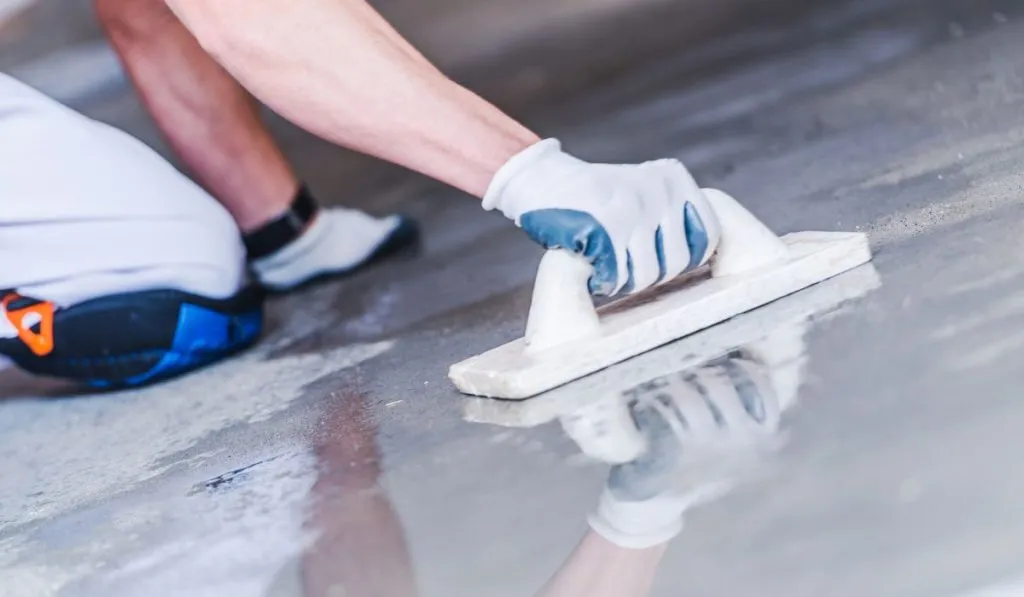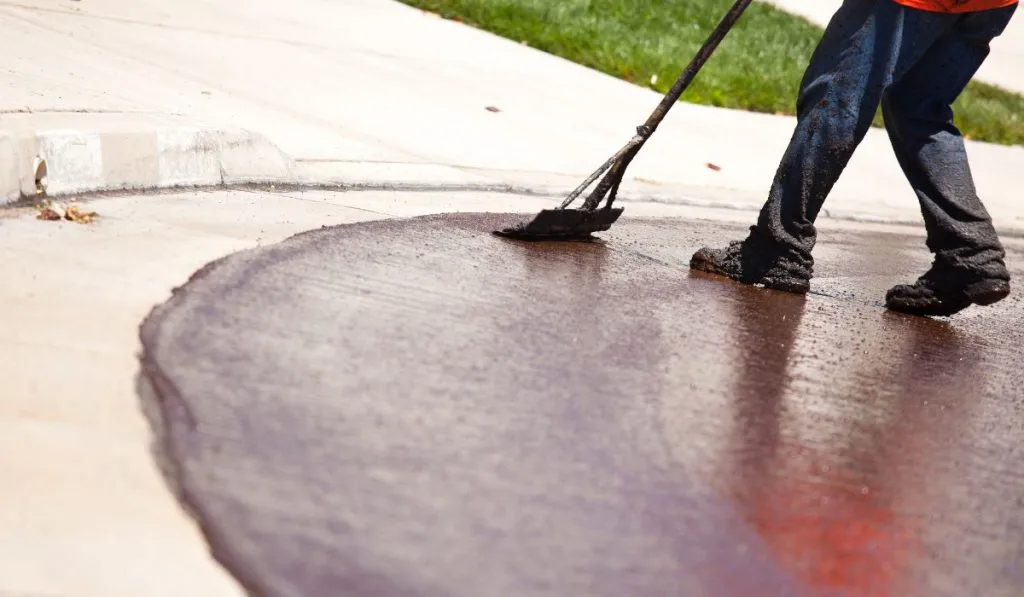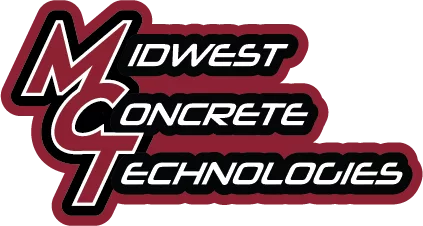
How much does concrete resurfacing cost compared to replacement? Midwest Concrete Technologies breaks down the 2025 driveway resurfacing and overlay options, showing how concrete resurfacing offers a budget-friendly solution using affordable concrete resurfacing products. Choosing resurfacing over full replacement can save homeowners money while giving their concrete surfaces a fresh, durable finish.
How Much Does Concrete Resurfacing Cost Compared to Replacement?
Concrete in Wisconsin takes a beating from weather. Many people wonder if they should resurface or replace their driveways, patios, walkways, or garage floors. Knowing the cost differences can help you pick the best fit for your budget.
Understanding Concrete Resurfacing
Concrete resurfacing means putting a new layer over old concrete. It fixes looks and functions without removing the old slab. Here’s what you get:
- Durability: Resurfaced concrete can last for years.
- Professional Contractor: Experts check the surface before work starts.
- Surface Condition Assessment: They look for cracks or damage first.
- Maintenance Requirements: You’ll need to keep it clean and sealed sometimes.
- Long-Term Savings: It costs less than replacing concrete in most cases.
What is Concrete Resurfacing?
Concrete resurfacing gives you a cheaper way to fix worn-out areas. It covers up cracks and stains, making things look better again. Plus, it makes the surface tougher against future wear. This method stretches the life of your concrete without breaking the bank.
Types of Concrete Resurfacing Options
You can pick from several kinds of resurfacing:
Concrete Overlays
These add a thin layer on top of old concrete.
- Cost usually runs between $3 and $7 per square foot.
Stamped Concrete Resurfacing
This style copies patterns like stone or brick.
- Prices fall around $8 to $12 per square foot depending on design.
Epoxy Coatings and Sealers
Epoxy coatings protect concrete from stains and chemicals.
- Expect to pay about $5 to $10 per square foot.
Decorative Concrete Finishes
These include textured surfaces or acid staining for looks.
- Costs often start near $4 per square foot but vary widely.
Suitable Applications for Concrete Resurfacing
People often resurface these areas:
- Driveways: Usually cost between $2,000 and $4,500 based on size.
- Patios: Generally run from $1,500 to $3,000.
- Walkways: Prices start at about $800 up to $1,500.
- Garage Floors: Cost ranges roughly from $1,200 to $2,500 depending on finish.
Limitations of Concrete Resurfacing
Resurfacing isn’t always the answer:
- If there is serious damage below (deep cracks or structural issues), you may need full replacement instead.
Knowing when resurfacing fits your needs helps you save money while fixing your concrete properly for Wisconsin’s tough weather.
Concrete Replacement: The Full Removal and Installation Process
Concrete replacement means taking out the old concrete completely and putting in new stuff. It starts with concrete slab removal, which needs special concrete demolition equipment like jackhammers, saws, and excavators. These tools break up the concrete so it can be removed safely.
After removal, you have to deal with concrete disposal costs. Getting rid of debris right is key because local rules in Wisconsin say how you must handle waste. Once the site is cleared, workers do site excavation and grading. This makes a strong base for the new concrete. Sometimes, they fix slopes or drainage problems to help the concrete last longer.
Sometimes, you need to fix the foundation or improve drainage before pouring new concrete. Fixing these things first stops future issues from soil shifting or bad water flow.
Don’t forget about permits. Wisconsin requires permits for big concrete jobs. Homeowners should check with local officials about what’s needed for demolition, excavation, and installation to avoid fines or hold-ups.
When Is Concrete Replacement Necessary?
You need to replace concrete when the surface shows big problems that simple fixes can’t handle:
- Concrete structural integrity evaluation: Deep cracks or rusted rebar mean resurfacing won’t cut it.
- Extensive damage repair: Large patches flaking off, big cracks, or sinking slabs from moving soil need full replacement.
- Surface condition assessment: Uneven spots that cause trips should be removed fully rather than patched.
- Project scope evaluation: When you want a big upgrade—like switching to decorative stamped concrete—or fixing drainage under slabs.
If your driveway or patio looks bad all over and isn’t safe, replacing is better than patching over and over again.
Types of Concrete Replacement Options
Standard Concrete Replacement
This means pouring fresh concrete after getting the site ready:
- Material costs vary but usually fall between $4–$8 per square foot in Wisconsin.
- You also pay for mixing and pouring labor plus curing compounds that help the new slab harden right.
This option works well for driveways, patios, walkways, or garage floors that need solid bases without fancy finishes.
Decorative and Custom Concrete Installation
If you want something special looking along with strong:
- Decorative concrete uses colored pigments mixed into wet concrete plus textures like exposed aggregate.
- Custom work lets you pick patterns that match your style exactly.
These cost more upfront but boost curb appeal while staying tough longer than plain slabs.
Stamped Concrete Replacement
Stamped concrete replacement involves pressing molds onto fresh concrete to look like stone or brick:
- They offer fancy designs at moderate extra cost (about $8–$15 per square foot).
- Great if you want to match existing stamped features or make outdoor spaces stand out with style and strength.
Long-Term Benefits of Concrete Replacement
Replacing concrete costs more at first (anywhere from $6–$12+ per square foot depending on details), but there are good reasons for it:
- Long-term savings: You spend less on repairs since new slabs don’t need patching all the time.
- Increased durability: New foundations handle Wisconsin’s weather better than patched-up old ones.
- Improved aesthetics: You get full control over how it looks—from simple gray slabs to detailed stamped designs.
Going for replacement means your investment lasts for decades without major fixes. It also adds value by making your property look better and work better over time.
Detailed Cost Breakdown: Resurfacing vs. Replacement
When you decide between concrete resurfacing and replacement, cost plays a big role. Prices change a lot based on materials, labor, and where you live. In Wisconsin’s Midwest market, costs can look different than in other places.
Concrete Resurfacing Cost Factors
Here’s what affects resurfacing costs:
- Price per square foot usually runs $3 to $7 for basic overlays. Fancy finishes cost more.
- Skilled workers are needed for prep and application.
- Surface prep like cleaning or fixing cracks adds extra cost.
- Adding coatings or sealers makes it last longer but costs more.
Resurfacing uses less labor than replacing concrete. But surface prep has to be done right to stick and hold up over time.
Material Costs per Square Foot
Materials really affect price:
- Cement-based overlays cost about $2.50 to $5 per sq ft.
- Polymer-modified overlays add strength and run $4 to $8 per sq ft.
- Self-leveling overlays fix uneven surfaces; they cost $5 to $9 per sq ft because of special formulas.
Picking better materials means your concrete lasts longer but costs more upfront.
Labor Costs and Time Requirements
Labor varies by project:
- Skilled contractors in Wisconsin charge around $40–$70 per hour.
- Most resurfacing takes 1 to 3 days depending on size.
Fast work means less hassle for you and helps avoid future problems.
Surface Preparation Expenses
Prep matters a lot for durability:
- Basic cleaning might be part of labor.
- Grinding or shot blasting adds about $1–$3 per sq ft extra.
- Site excavation or grading starts around $500 but can go up if needed.
These steps clear dirt and smooth out flaws before new layers go down.
Concrete Replacement Cost Factors

Replacing concrete is a bigger job than resurfacing. The big costs include tearing out old concrete, new material prices, labor, and site prep that changes by region in the Midwest.
Demolition and Removal Costs
Breaking up old concrete needs heavy tools like jackhammers or excavators:
- Demolition fees run from $2 to $6 per square foot based on thickness.
- Disposal fees vary but average about $.30–$.60/sq ft.
This part often uses 20%–30% of your total replacement budget because it’s tough work.
New Concrete Material Costs
The mix type changes the price:
Standard mixes for driveways start near $100-$120 per cubic yard installed. Colored or decorative mixes cost more — over $150 per cubic yard. These mixes include things like pigments or special patterns added when pouring. They use curing compounds that help strength grow right after installation.
Installation Labor Expenses
Labor rates change across regions:
In Wisconsin’s Midwest:
- Hourly wages fall between $45 – $75, depending on crew skill
- Bigger jobs save money by working faster overall
Installation covers setting forms and finishing edges well. This work affects how long the project lasts—usually from 3 days up to a week depending on size.
Site Preparation And Grading Costs
Grading makes sure water drains away properly. This stops pooling that damages slabs early. It’s very important in Wisconsin’s winter where freeze-thaw cycles can cause cracks fast if not done right.
Regional Cost Variations In The Midwest
Wisconsin homeowners see different prices compared to other states because of these reasons:
Climate Impact On Durability
Freeze-thaw cycles mean you need materials that last beyond looks—polymer overlays hold up better here compared to regular cement ones which crack easily without extra support.
Regional Labor Rates
Midwest construction wages stay moderate compared to big cities on coasts, but skilled workers still get paid well because they must work fast during limited warm months.
Midwest Concrete Cost Trends
Recent info shows rising prices due to inflation and supply delays pushing driveway replacements toward the high end ($12-$18/sq.ft.). Meanwhile, resurfacing stays cheaper at about half that (~$6-$9).
Waukesha Concrete Resurfacing Cost
Local quotes show average resurfacing costs near ~$5-$7/sq.ft., including usual site conditions plus coating extras. This makes resurfacing a good deal compared with full replacement that often costs double.
Comparing Costs by Project Type
Concrete resurfacing and replacement costs change a lot based on the project. Knowing these differences helps folks in Wisconsin choose right for their budget, needs, and how bad their surface looks.
Driveway Resurfacing vs. Replacement
Driveways need work often. The driveway resurfacing cost runs about $3 to $7 per square foot. That depends on stuff like stamped overlays or epoxy coatings. If you replace the driveway, it costs more—$8 to $15 per square foot. That’s because they must break up old concrete, haul it away, pour new concrete, and finish it nicely.
How big your driveway is makes a big difference in cost. Bigger driveways mean more money for materials and labor no matter if you resurface or replace. Using a concrete replacement cost calculator helps figure out what your driveway will cost exactly.
Resurfacing works well if cracks or stains only hurt looks but the driveway still holds up. You need replacement if cracks go deep, parts sink down, or water pools cause safety problems.
Patio Surface Restoration Cost Analysis
Patios look nicer with decorative resurfacing options. The patio resurfacing cost goes from about $4 to $9 per square foot when using stamped overlays or color finishes that freshen your outdoor space without tearing out the slab.
Patio concrete installation with poured concrete costs more—$10 to $18 per square foot—especially if you want special designs or stamping done.
Stamped overlays let you get fancy stone or brick looks on patios for less money than full replacements. They also make the surface last longer by a few years.
Walkway Renovation Cost Comparison
Walkways often crack or get uneven but can be fixed cheap with resurfacing. It costs about $3 to $6 per square foot to clean, fill cracks, put on an overlay, and seal it so it lasts longer.
If you replace a walkway completely, it means pulling up old concrete and prepping ground first. That usually costs double—around $7 to $14 per square foot—depending on how hard it is to do and how smooth you want the finish.
If damage is just surface level, resurfacing saves lots of money compared to fully replacing slabs like in some sidewalk repairs.
Garage Floor Treatment Options and Pricing
Garage floors need strong coatings that fight stuff like oil spills. The typical garage floor resurfacing price is between $2 and $8 per square foot using epoxy coatings or sealers made for toughness and easy cleaning.
Epoxy coatings stop chemicals from soaking in while making floors shiny and colorful. The epoxy concrete coating price changes based on how thick the coat is and if the floor needs grinding before applying.
Most garage floors don’t need replacing unless they are really damaged because good treatments keep them working well without tearing everything out. Full replacements often cost more than twice as much as epoxy jobs.
Factors to Consider When Choosing Resurfacing or Replacement
Picking between concrete resurfacing and replacement takes some thought. Your Wisconsin home’s needs come first. You want to avoid problems later on.
Assessing Current Surface Condition
Check the concrete’s current state before deciding. Here’s what to look for:
- Concrete surface cracks: Tiny cracks? Resurfacing might work. Big cracks? Probably replacement.
- Concrete spalling repair: If the surface flakes a little, overlays can fix it. If spalling is bad, you need new concrete.
- Concrete shrinkage cracks: These small cracks happen a lot and usually patch well with filling methods.
- Surface preparation techniques: Clean, grind, and level the surface right before resurfacing. That helps stuff stick better.
If damage runs deep or affects structure, replacement is safer.
Climate Impact on Concrete Durability
Wisconsin weather hits concrete hard. Freeze-thaw cycles cause cracking and flaking over time.
- Freeze-thaw cycles speed up surface wear.
- Floods plus freezing make damage worse.
- Epoxy sealers help protect surfaces if added when resurfacing.
Replacement lets you put in materials built for harsh weather. They resist freeze-thaw damage better than older slabs.
Property Value and Aesthetic Considerations
Both resurfacing and replacement change your home’s look differently:
- Property value impact of resurfacing: Refreshes appearance for less cash; decorative stamped overlays add style without full redo.
- Home value enhancement through concrete work: New concrete lets you choose colors, patterns, textures that can raise curb appeal more than a simple resurface.
Think about how you want your space to look—resurfaced patios feel fresh; replaced driveways look brand new with your exact style.
Timeline and Disruption Factors
Resurfacing goes fast with little mess because no old concrete gets ripped out. Replacement means digging up old stuff which takes longer but gives you a solid fresh start.
Making the Right Decision for Your Concrete Project
Choosing between concrete resurfacing vs replacement depends on a few things. First, look at your project’s size and budget. Resurfacing fits when concrete has small cracks, stains, or wear but no big damage. Replacement works better if the concrete has deep cracks or safety problems.
Check the concrete’s current state to decide. A pro contractor can give you an accurate estimate after checking the surface, drainage, and foundation. Matching costs with your long-term goals helps you spend money smartly, whether fixing or replacing the concrete.
When Concrete Resurfacing is the Best Choice
Concrete resurfacing gives a cost-effective solution that fixes looks and function without tearing out old concrete. It can improve how your surface looks using stamped overlays, epoxy coatings, or cool finishes while fixing cracks and bumps.
Resurfacing adds protection against weather damage, which is important in Wisconsin’s climate. It also causes little disruption since it takes less time—usually just a few days—and skips messy demolition.
You can customize your surface to match your home style or try new textures without spending as much as replacement costs. For many, resurfacing saves money over time by making the surface last 10 to 15 years when kept up right.
Situations Where Concrete Replacement is Worth the Investment
Concrete replacement makes sense if damage is bad and beyond repair—like big cracks that hurt structural integrity or severe spalling from freeze-thaw cycles common in Wisconsin winters.
Replacement means removing old slabs completely plus paying demolition costs before pouring new concrete made stronger with better drainage around foundations. The upfront concrete removal and replacement cost runs $8 to $15 per square foot depending on how hard the job is. But this pays off with longer life (20+ years) and may raise property value.
Fixing foundations or adjusting slopes needs replacement because these fix deep problems affecting stability that resurfacing can’t handle.
Getting Accurate Cost Estimates from Contractors
To get good quotes, pick a skilled local contractor who knows Midwest conditions like in Wisconsin. Labor rates change by region; expect prices to rise during busy seasons.
A quality contractor will check:
- What surface prep is needed
- What materials fit your project
- How many labor hours are needed based on site access
Ask for a full price list—from cleaning and grinding old surfaces to sealing—to avoid surprises later.
Midwest prices show resurfacing usually costs $3–$7 per square foot while replacements run $8–$15 in places like Waukesha County, Wisconsin.
Make sure contractors explain warranty coverage so you know what’s covered—workmanship issues vs material problems—before signing contracts.
Seasonal Pricing and Warranty Considerations
Prices go up and down with seasons because weather affects outdoor work schedules in Wisconsin’s cold months. Spring through early fall usually brings better prices since conditions help curing happen faster without frost or rain delays.
Warranties differ a lot between resurfacing (often 1–5 years) and new concrete installs that can have up to 10-year warranties covering materials and labor under some companies’ plans.
Check warranty details carefully:
- What kind of damages do they cover?
- Do you need to do any maintenance?
- Does warranty transfer if you sell your house?
Knowing these points helps protect your investment long-term. It also shows if saving money now makes sense compared to expected lifespan benefits later on.
